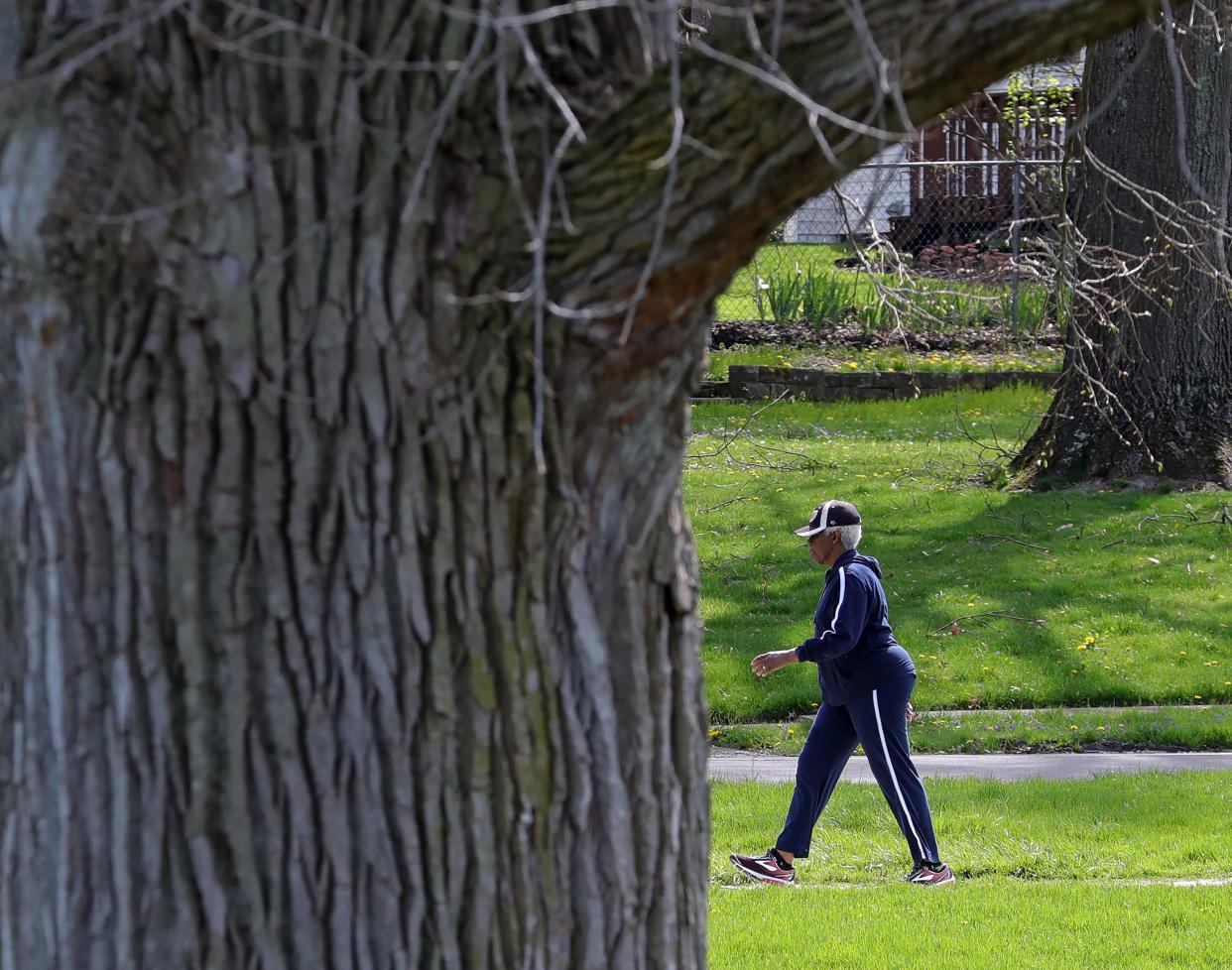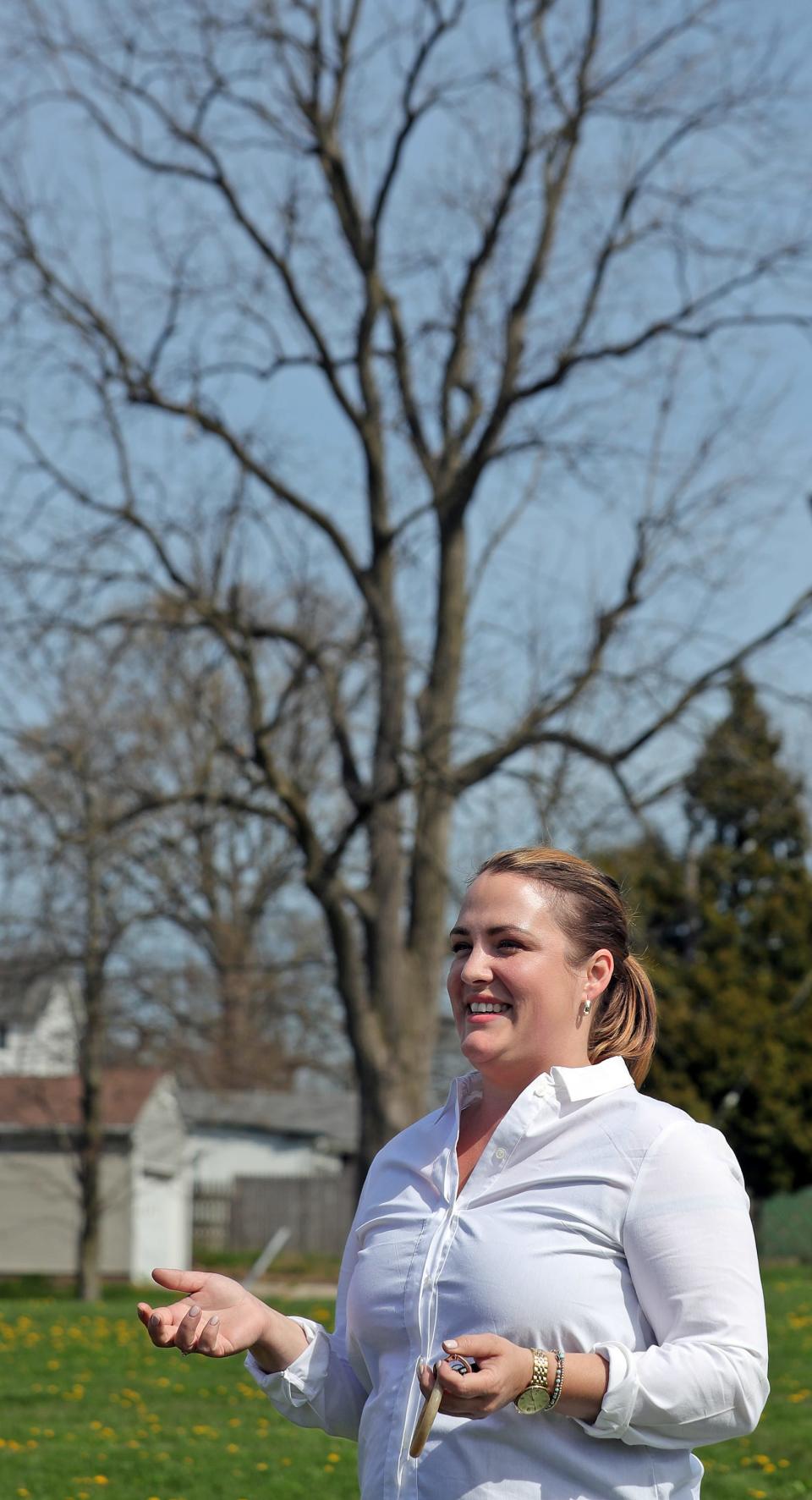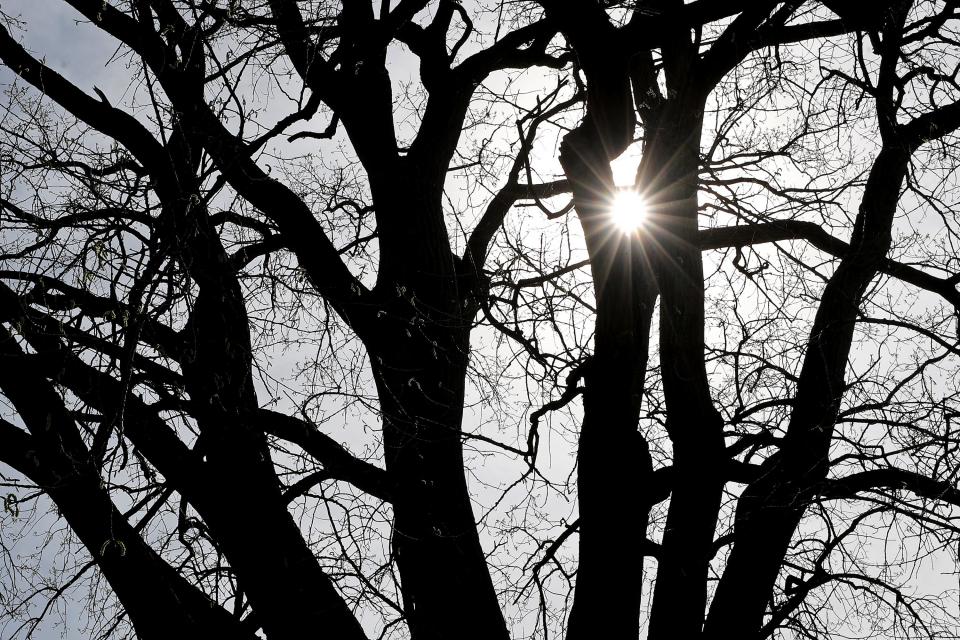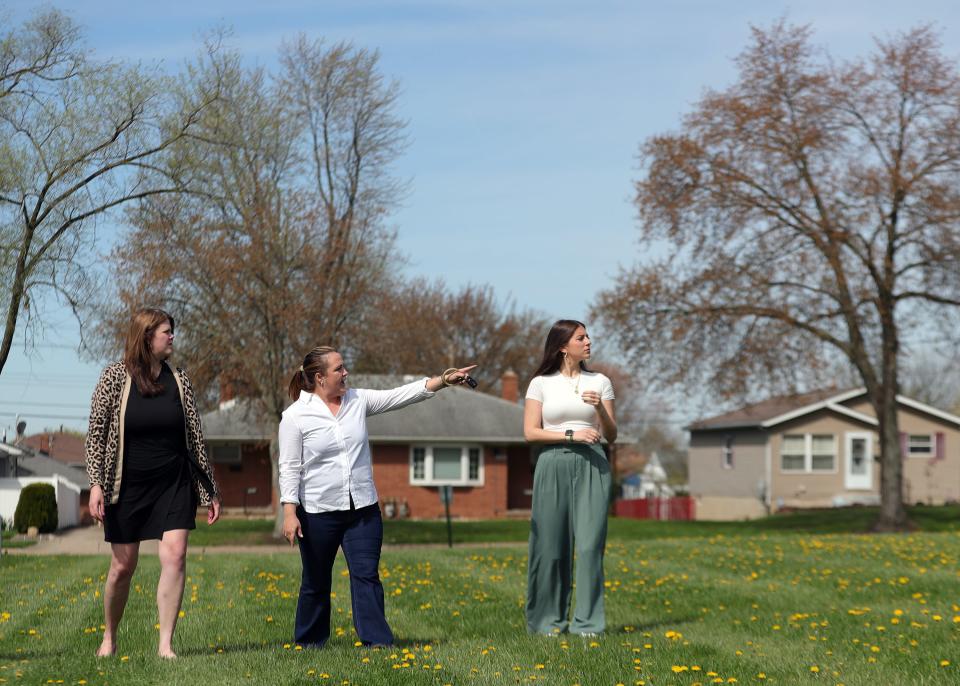Can you dig it? Keep Akron Beautiful asks residents to plant 100,000 trees over 10 years

Keep Akron Beautiful wants to get residents involved in rejuvenating the city's waning tree canopy.
Over the past decade, Akron's tree canopy coverage has dropped from 40% to 34% due to a variety of causes, including construction for the Combined Sewer Overflow Project and climate change, said Emma Segedy, the organization's community outreach manager.
Doing nothing means Akron will lose 109,000 trees by 2040.
"So, we are launching a new campaign called Planting Change where we are hoping to plant 100,000 trees by 2034," said Segedy, something that can't be done without Akronites' help.
Jon Malish, Akron's parks maintenance manager and arborist, said home and property owners play a key role in growing and maintaining the tree canopy.
"The city only controls 9% of the land population citywide," said Malish. "The rest of it is private. So that's really where this initiative has to focus on, is on the private side of things."
From noon to 3 p.m. Saturday, residents are invited to Hardesty Park, 1615 West Market Street, to help kick off Planting Change, a free event where they can learn practical tree-planting tips and sustainable tree-care practices.
Participants can engage in hands-on activities and create eco-friendly crafts to take home — as well as browse a curated selection of local arts vendors. Dayton Nursery, Graf Growers and Suncrest Gardens will be there, selling plants. The first 100 attendees will receive a white oak seedling.
Malish is speaking, and Summit Metro Parks is presenting about its native plant programming. Food trucks from Café Arnone and Smash Time will be on-site.
The goal of planting 100,000 trees by 2034 is a maintenance measure, Segedy said. The aim is to prevent further erosion of canopy coverage.
Failure to do so, she said, means Akron will miss out on the benefits a health tree canopy provides.
Tree canopy benefits

Leah Heiser, Keep Akron Beautiful's flowerscapes director, said that in addition to providing an abundance of ecological services like reducing stormwater runoff and cleaning the air we breathe, trees provide social and economic benefits. They can increase property values and help with heating and cooling costs by providing shade and acting as a wind break, she said.
Studies have shown that living in an area with many trees can have positive effects on mental and physical health. Specifically, Heiser said that trees lessen the symptoms of ADHD, high blood pressure, stress and anxiety.
Akron's 2020 report on its tree canopy, developed by the Davey Resource Group, noted that more trees in dense urban areas results in reduced asthma rates. It also said that studies indicate a 9% to 12% rise in spending in areas with business districts with high-quality tree canopy coverage, and a reduction in crime resulting from the calming effect trees have on aggressive behaviors.
These benefits add up.
"In 2018, Akron’s tree canopy provided approximately $27.3 million in ecosystem benefits annually," the study said. "This means approximately $138 provided annually to each resident of Akron, and this equates to each neighborhood receiving roughly $1,138,229 per year in ecosystem benefits.
"Tree canopy in Akron removed an estimated 1,186,980 pounds of pollutants and 70,113 tons of carbon from the air while slowing more than 255 million gallons of stormwater from entering storm drains during peak storm events."
Planting the idea for replenishing Akron's tree population

Jacqui Ricchiuti, CEO and executive director for Keep Akron Beautiful said James Hardy, who was elected in November to Akron City Council's Ward 8 seat, came to her roughly a year ago asking if the organization would be interested in helping the city replenish its tree population.
Hardy and Malish worked together on the tree study, which, Hardy said, made two things clear: Akron didn't have enough money or enough land to take on the project by itself.
"So, right off the rip," he said "we knew that private property owners, whether they be commercial residential, are going to have to be a part of the solution."
Ricchiuti said getting private entities involved means educating kids and parents, and encouraging tree removal companies to distribute literature about the importance of replacing trees that have been removed.
Heiser added that she'd like Keep Akron Beautiful to become the go-to place for residents to learn about planting trees — placement and where to purchase trees locally — and partner with other environmental groups.
Hardy said one of the information campaign's priorities is getting trees into neighborhoods where planting them will have a tangible effect on economics and quality of life.
Areas most in need

Tree canopy loss is a citywide problem, but is most pronounced in neighborhoods with a history of redlining — communities of color.
"The legacy of that is still with us and the disparities from it are still impacting residents," said Director of Sustainability Casey Shevlin in an email. "For instance, if a neighborhood has low tree canopy coverage, it has less shade and may get hotter than neighborhoods with more tree canopy coverage. That can contribute to higher energy costs for homes in the low-canopy neighborhood."
"So for example," Heiser said, "in East Akron and South Akron, we have very little tree coverage. And it's very warm in those areas. So immediately, the temperature's going to decrease. And then as those trees mature, there'll be a little bit more economic benefits, and then mental health benefits."
Hardy hopes that Planting Change will result in future generations picking up the mantle of environmental stewardship.
While he's confident that residents can plant 100,000 trees by the deadline — a project he calls a "gift" to the next generation — it can feel overwhelming not knowing how to get involved, Hardy said.
"This is a simple, easy, impactful way, that everyone from an individual to a business to a property owner can make an impact instantaneously," he said. "And we can do this. I have full faith and confidence that Akron will plant 100,000 trees by the deadline.
"We're changing, and hopefully in the process, we will change the culture so that the next generation will pick it up and the next generation, and we won't have this precipitous loss of tree canopy as an ongoing issue."
Contact reporter Derek Kreider at DKreider@Gannett.com or 330-541-9413
This article originally appeared on Akron Beacon Journal: Keep Akron Beautiful launches bid to plant 100,000 new trees by 2034

